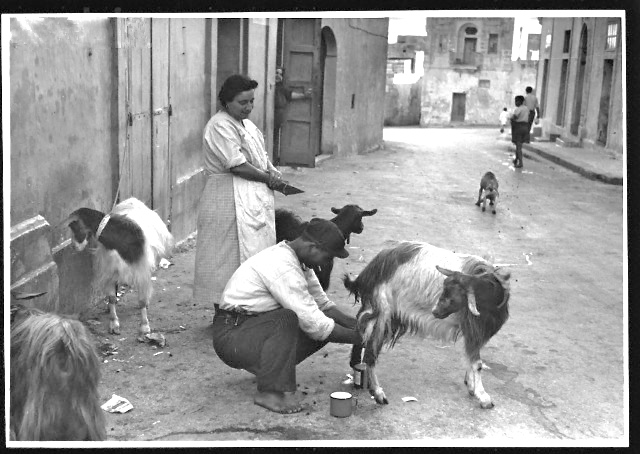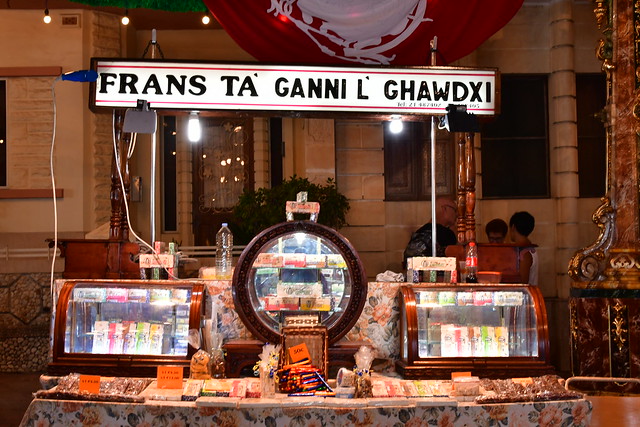Traditionally, Maltese street vendors would earn a living by travelling from one village to another, where housewives would be patiently waiting to buy or order whatever they needed. The products these vendors sold ranged from household items – such as cooking pots and cleaning supplies – to foodstuffs like bread, fish, and vegetables.
When they’d arrive at their destination, the vendors would announce what they were selling, breaking the day’s silence. After all, the old saying goes “l-għajta hija nofs il-bejgħ” (“calling out is half the sale”).
While most vendors would carry their goods in different ways, such as on their heads, shoulders, in bundles, and even old pushchairs, heavier loads would be carried on horse or donkey-drawn carts. Later on, these carts would be mostly phased out, being replaced by vans and trucks.
Some of these vendors can still be seen around Malta and Gozo – albeit with some updated gear – serving as a reminder of a different era.
Fishmongers, known as Tal-Ħut
Fishmongers are among the street vendors that are still pretty abundant nowadays, often seen driving around villages with their freshest catch. In Mellieħa, for instance, one can sometimes hear the local fish vendor shouting out, “tal-lampuki!”, from several streets away.
Featured here is Joyce, who has been working as a fishmonger for over 50 years.
Prickly pear vendors, known as Tal-Bajtar
Vendors selling prickly pears, or ‘bajtar tax-xewk’ in Maltese, traditionally used dish scales to weigh their fruit. Sometimes, fruit was even peeled then and there for customers to eat on-the-go!
One of the last remaining prickly pear vendors is Salvu from Zejtun (pictured above), who has been consistently selling the fruit for 60 years.
Bakers, known as Tal-Ħobż
Back in the day, bakers used to travel around villages in mule-drawn carts carrying numerous kinds of bread, including the iconic ftira. Vendors would bring along a scale, along with a big loaf of bread from which they’d cut smaller portions to give to customers.
Nowadays, you can still find bakers selling their products on the streets of Malta and Gozo, sans mule.
Milk vendors, known as Tal-Ħalib
Over 100 years ago, farmers used to deliver the freshest milk possible from door to door – that is, by bringing their goats along and milking them then and there. However, many customers started to fall ill with what would later be known as Id-Deni Irqiq, or undulant fever.

In 1905, Sir Temi Zammit discovered that a bacterium present in goats’ blood, known as Brucellosis melitensis, was responsible for this fever as it was passed on into the milk that they produced. This led to a law being passed stating that milk should be boiled in order to get rid of the bacterium. Maltese people were initially resistant to the rule, believing that this would ruin the milk’s flavour.
By 1938 the Milk Centre was established for the mandatory pasteurisation of cows’, goats’, as well as sheeps’ milk in order to consume it risk-free.
Tal-Bigilla
Bigilla is a traditional Maltese dip or spread made out of broad beans, and the vendors selling it, known as tal-bigilla, can still be seen around the islands.
While most vendors have modernised their setup, some opt to keep the traditional carts.
Kerosene vendors, known as Tal-Pitrolju
Kerosene was widely used for cooking and heating purposes many years ago. As new methods, materials, and technologies emerged, the need for kerosene diminished greatly, reducing the kerosene vendor to a very rare sight around the Maltese islands.
Salt mongers
It comes as no surprise that Malta and Gozo, two small islands surrounded by sea, are dotted with salt pans, such as those in Saint Paul’s Bay and Ta’ Xwejni in Zebbug (Gozo). Back in the day, vendors would harvest the salt and sell it to people on the street.
One of the last remaining salt mongers is beloved Gozitan icon ‘Leli tal-Melħ’, based at the Xwejni salt pans.
Nougat vendors, known as Tal-Qubbajt
Nougat vendors are still seen across the Maltese islands during our numerous village festi.
During these celebrations, vendors set up their traditional stands amongst the countless other stands and food trucks.

Fruit and vegetable vendors, known as Tal-Ħaxix
Fruit and vegetable vendors are still seen relatively frequently nowadays, driving around in vans and trucks from one village to another selling the freshest crops available.
Do you see any of these old-school vendors around your town or village?
The People of Malta/Facebook, Kappa Vision/Facebook, Kappa Vision/Facebook, Frank Lea-Ellis/Flickr, Times of Malta/Facebook, Tourism Marketing Concepts/Pinterest, Xwejni Salt Pans Leli tal-Melh/Facebook, Alfred Briffa/Flickr, Kappa Vision/Facebook